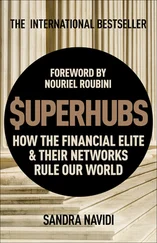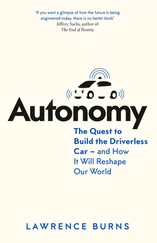Translated into mathematical formulas, the principles of a smart swarm have given businesses powerful tools to untangle some of the knottiest problems they face. Manufacturing companies have experimented with them to optimize production, for example. Telephone companies have tested them to speed up calls. Aircraft mechanics and engineers have applied them to identify problems in new airplanes. And intelligence agents have used them to keep track of a dangerous world.
How does a smart swarm work? We’ll find out in the first three chapters by following biologists into the field to unlock the secrets of collective behavior. As these researchers have discovered, social insects such as ants, bees, and termites distribute problem solving among many individuals, each of which is following simple instructions but none of which sees the big picture. Nobody’s in charge. Nobody’s telling anybody else what to do. Instead, individuals in such groups interact with one another in countless ways until a pattern emerges—a tipping point of motion or meaning—that enables a colony of ants to find the nearest pile of seeds, or a school of herring to dodge a hungry seal.
In the fourth chapter we’ll look at the subtle role that individuals play in keeping a group on course. For groups such as flocks of birds, schools of fish, or herds of caribou, which are made up of individuals largely unrelated to one another, the key to survival demands a set of skills that balances group behavior with self-interest. As humans, we share many common problems with such groups, since we’re often torn by the same impulses—to cooperate but also to profit, to do what’s right for the community but also to look out for ourselves and our families.
Not every swarm is smart, of course. Group behavior also has a dark side. In the fifth chapter we’ll find out what scientists have discovered about locusts to explain why peaceful groups of grasshoppers suddenly explode into voracious plagues. To learn how human instincts can go haywire, we’ll also follow the work of researchers who have studied fatal crowd disasters among religious pilgrims in Saudi Arabia—and what’s been done to prevent such accidents in the future. What separates a smart swarm from its stupid cousin? Why does a happy crowd suddenly turn into a rampaging mob? The reason, simply put, is that a smart swarm uses its collective power to sort through countless possible solutions while the mob unleashes its chaotic energy against itself. And that makes it so important to understand how a smart swarm works—and how to harness its power.
As everyday life grows more complicated, we increasingly find ourselves facing the same problems of uncertainty, complexity, and change, drowning in too much information, bombarded with too much instant feedback, facing too many interconnected decisions. Whether we realize it or not, we too are caught up in worlds of collective phenomena that make it more difficult than ever to guide our companies, communities, and families with confidence. These challenges are already upon us, so we need to be prepared. The best way to do that, as you’ll see in the pages ahead, is to turn to the experts—not the ones on cable TV but those in the grass, in the air, in the lakes, and in the woods.
Конец ознакомительного фрагмента.
Текст предоставлен ООО «ЛитРес».
Прочитайте эту книгу целиком, купив полную легальную версию на ЛитРес.
Безопасно оплатить книгу можно банковской картой Visa, MasterCard, Maestro, со счета мобильного телефона, с платежного терминала, в салоне МТС или Связной, через PayPal, WebMoney, Яндекс.Деньги, QIWI Кошелек, бонусными картами или другим удобным Вам способом.












